Berlin based artist Kim Bartelt is a multidisciplinary artist whose practice explores the ephemeral nature of form, material, and perception. Her work is characterized by delicate layers of paper applied to canvas or linens, creating compositions that emphasize both structure and fragility. Through her nuanced approach to materiality, Bartelt examines the interplay between the seen and unseen, permanence and transience, offering meditative reflections on spatial and emotional depth.
We had the pleasure of catching up with Bartelt, exploring her artistic practice, early studies and the inspirations behind her latest work in her exhibition Rooms.
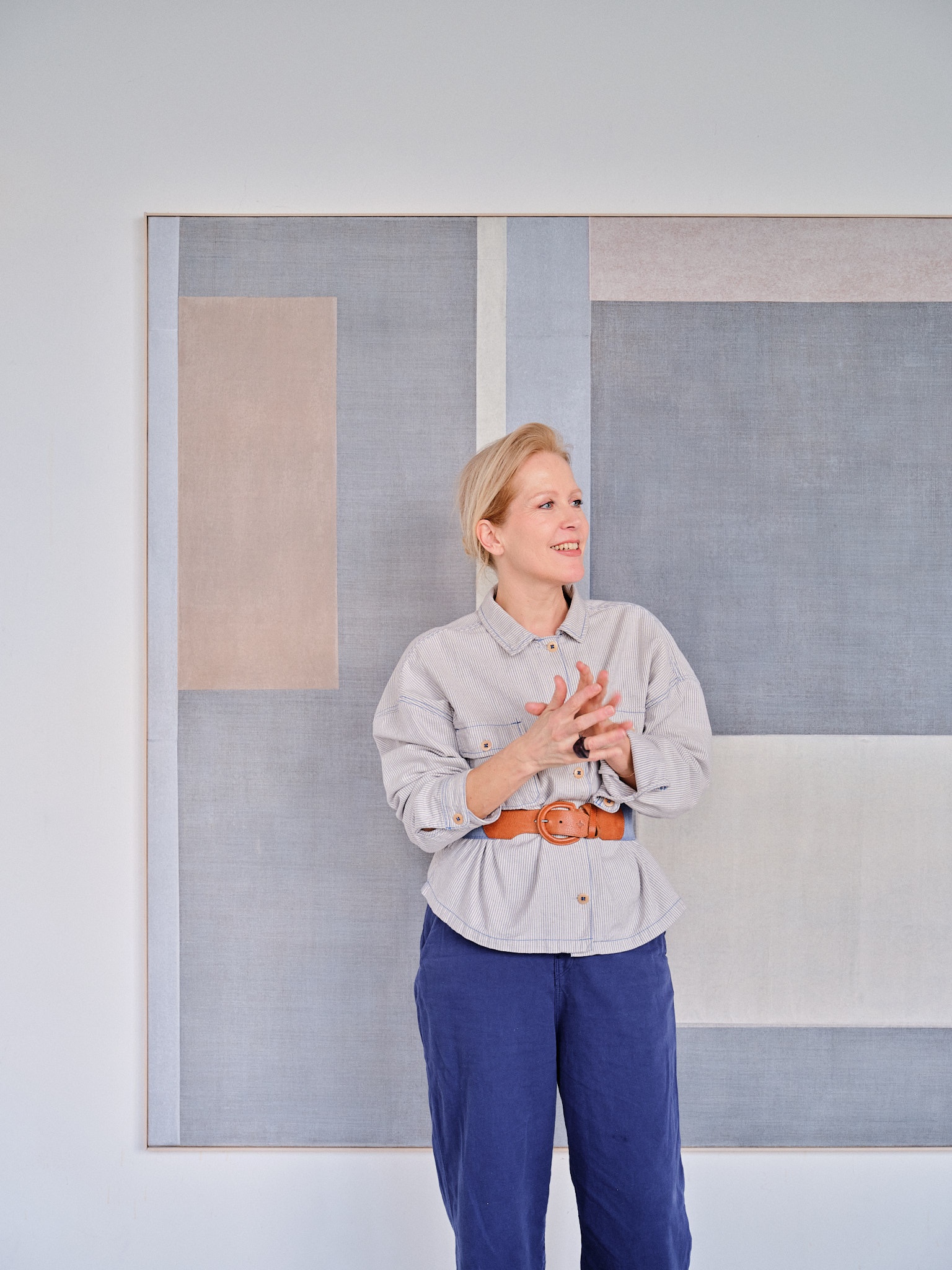
Kim Bartelt, image by Marina Denisov
A+W: Your practice exists at the intersection of painting and sculpture. What draws you to working with paper as your primary medium?
BARTELT: I did actually train in traditional oil painting, later in New York used acrylics, the paper was a coincidence.
I worked in set painting and set design after my studies. When we received decorative items for the set they’ve been wrapped in tissue paper to protect them. These papers were mostly discarded, I kept some of them, because I liked their colors, their transparency. It was only years later that I started working with them.
I felt they achieved exactly what I tried to do with the paint before. Applied on the canvas they always let you see the layer behind the paper. If you apply one on top you will still see the one below, a tension is created between them. This is what interests me, the space ‘between’, between things, between people, between buildings. This space which creates the dynamic between them. It is something which words cannot describe, so I find that these papers come very close to it. They are there, but it is not so much about them, they are just the material, therefore there is room for this ungraspable thing that I would like to draw the attention to.
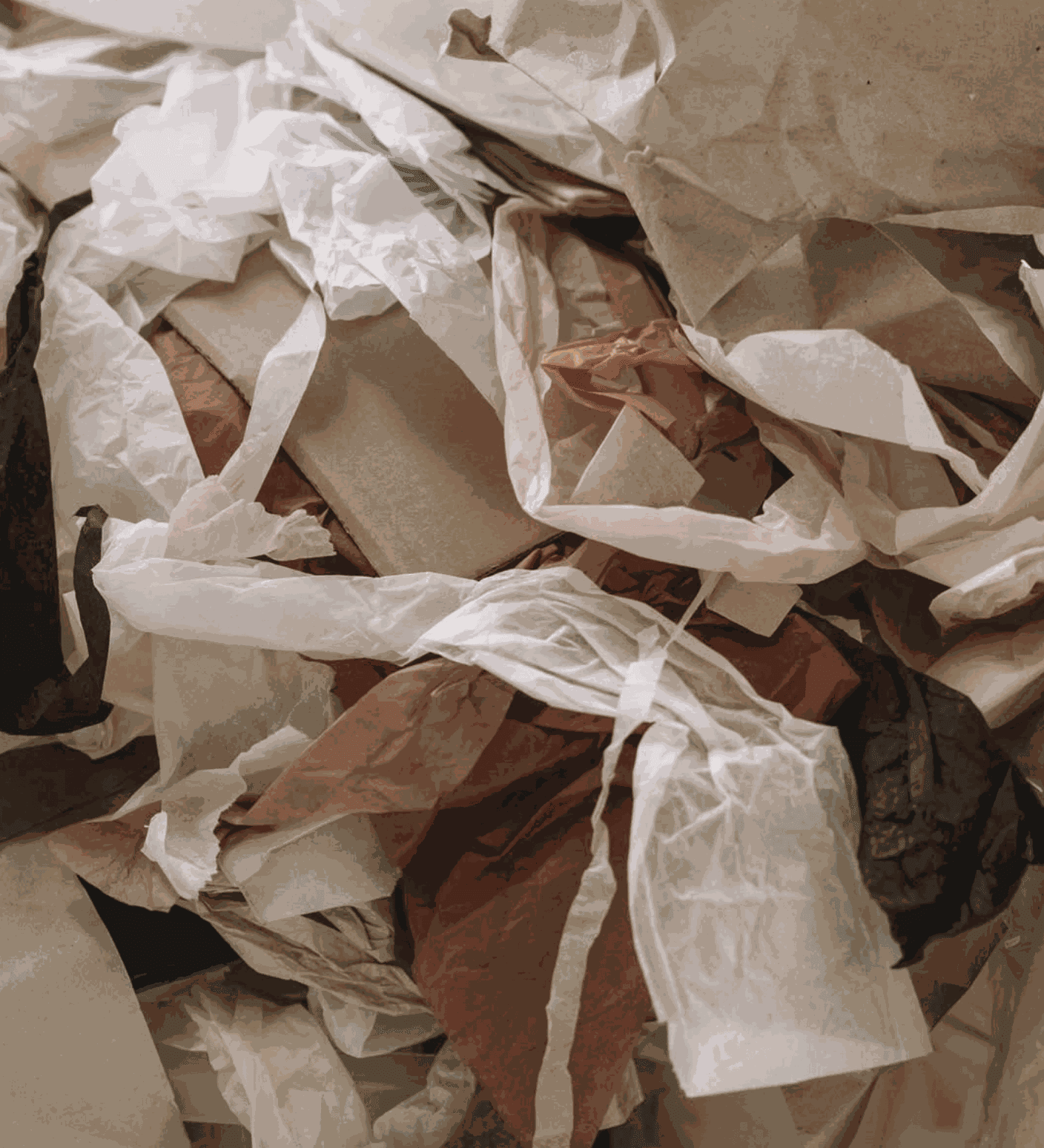
papers in artist's studio
A+W: You shared that early in your career, while working in set painting for large-scale commercial productions, that you became drawn to the discarded sheets of paper used in the process. Can you discuss further on what initially drew you in to the discarded sheets?
BARTELT: These papers haven’t actually been used in the set painting. When working on the set design, we had decorative items delivered to the set, those were often wrapped in tissue paper. I liked them, and as they would have been thrown away I started collecting some of them, especially since they came in all sorts of colors.
I later found that bag with the tissue papers in my oversea box shipped from New York, and thought I should use them for a project. I realised that they achieve exactly what I had tried to do with paint before.
A+W: Your work balances a sense of order with an inherent fragility. The concept of impermanence is also central to your work. How do you see this theme reflected in both your process and the final pieces?
BARTELT: That’s true. I like to create stability through the forms used in my work. These geometric structures are stable, the eye / one can hold on to them. But at the same time they are made of such a fragile material which is the paper, which can have dents or wrinkles, and can easily be torn.
Once these papers are pasted to the canvas they are stable, the glue holds them, this is one part of the work which interests me. To hold on to things, to create a stability.
At the same time they speak about the fragility of life because the papers are so fragile in themselves.
"THIS IS WHAT INTERESTS ME, THE SPACE ‘BETWEEN’, BETWEEN THINGS, BETWEEN PEOPLE, BETWEEN BUILDINGS. THIS SPACE WHICH CREATES THE DYNAMIC BETWEEN THEM." -BARTELT
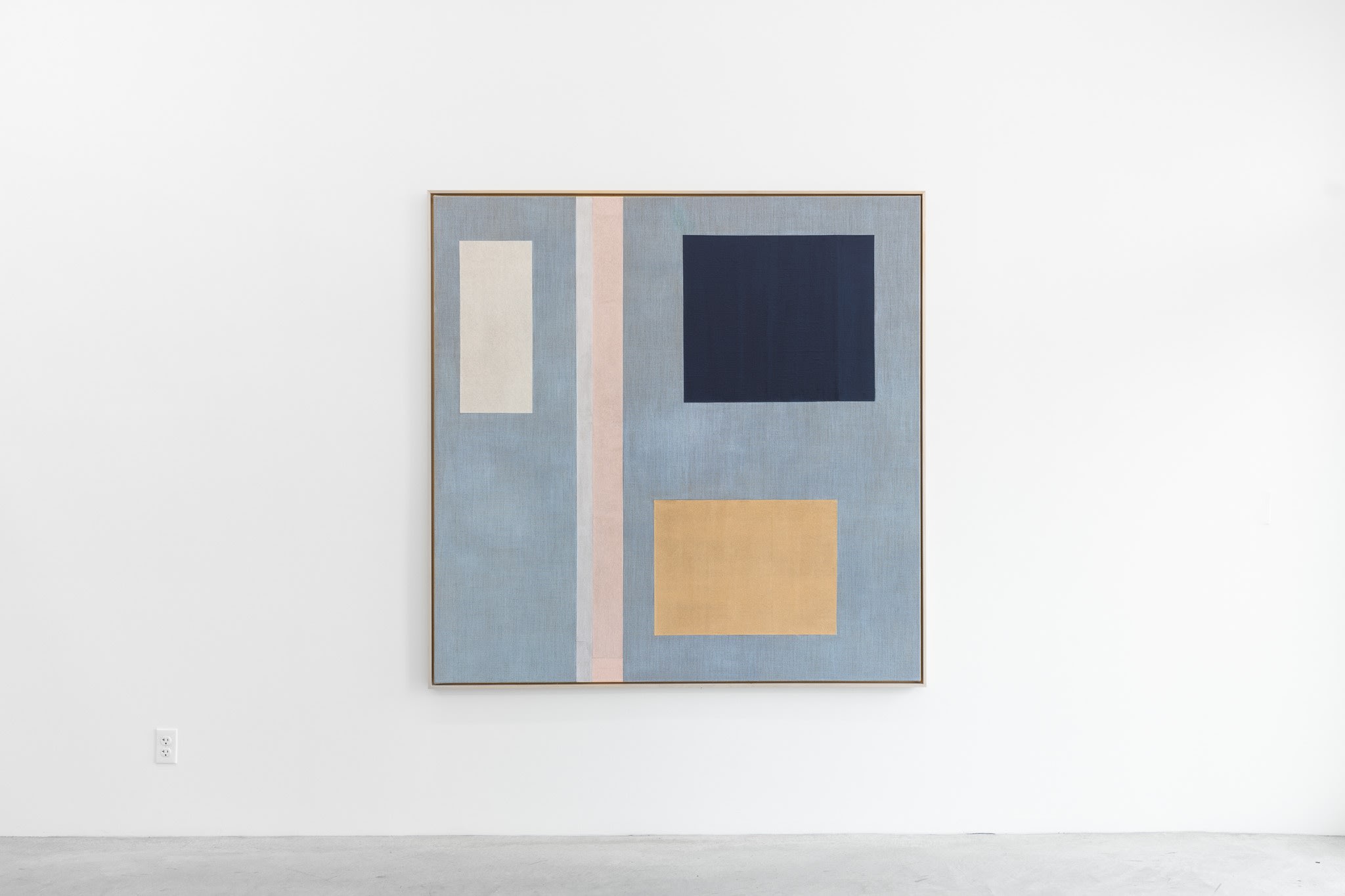 Room III, 2024
Room III, 2024
I had made a portfolio to apply for architecture here in Berlin, based on that I was invited to pass the 2 day exam. Each day had 2 subjects to work on, on the second day the second subject was: Berlin. I had a blank, I couldn’t draw anything, I didn’t see myself drawing the Brandenburg Gate or the television tower. I just couldn’t do anything. So that was that. I didn’t pass the entry test.
Then I tried to apply in Florence, where another german friend of mine was studying architecture. I took intensive italian lessons, travelled there, we were out the first night, Piazza Santo Spirito, I didn’t hear the alarm clock the next day when I had to test for my italian language skills, again, no chance.
Another friend told me about a study program in Paris with art, art history, curating, etc. I enrolled there to study for 2 years. We had to choose a studio. I took painting and
my teacher there, a great person and artist, said I should enroll at the Beaux Arts Academy in Paris, and study art. It was already May and I would have had to wait for a year to apply, so I look around for other Art Schools and found Parsons Paris.
From there the way led me to New York. I always wanted to do art, but I guess it is difficult to just say: I will be an artist, so sometimes it needs some deviation to get to where you want to be.
A+W: Does architecture inform your artistic practices, and if it does, in what ways? How does it continue to influence your work today?
In general I am very inspired by spaces. When working from different places these always directly influence my work.
Also the geometry of architecture projects a stability which is important to me.
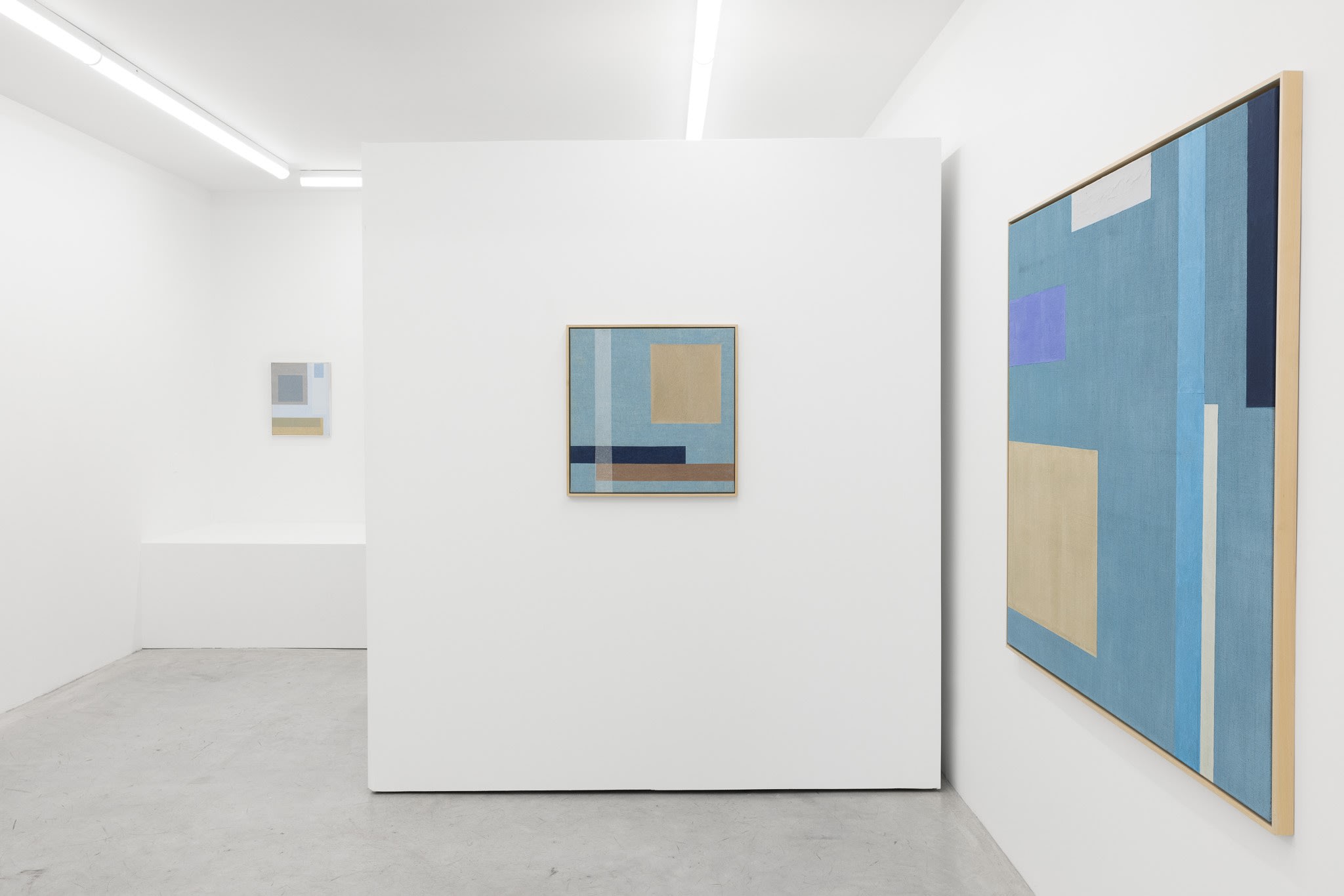
Rooms installation view at ARDEN + WHITE GALLERY
"THEY ARE BEING MADE OUT OF MY NEED TO FIND QUIET AND STABILITY IN THIS FAST PACING WORLD." -BARTELT
A+W: Your palette is often muted, with soft neutrals and subdued tones. What draws you to this restrained color language?
BARTELT: I do also have piles of more vivid colours in the studio. When I start with a work I stand in front of my papers and pick something. I do sometimes start with stronger colors, but then I feel they are screaming too loud, and I add layers on top, to mute them.
Why that is, I cannot say. Maybe related to...the fast paced world and how I would like my works to be perceived. I would like the viewer to find a pause, a relief, stability, quiet.
But then again, writing this I realise, I don’t make these works ‘for a viewer’, I don’t think about how I want someone to feel like. They are being made out of my need to find quiet and stability in this fast pacing world.
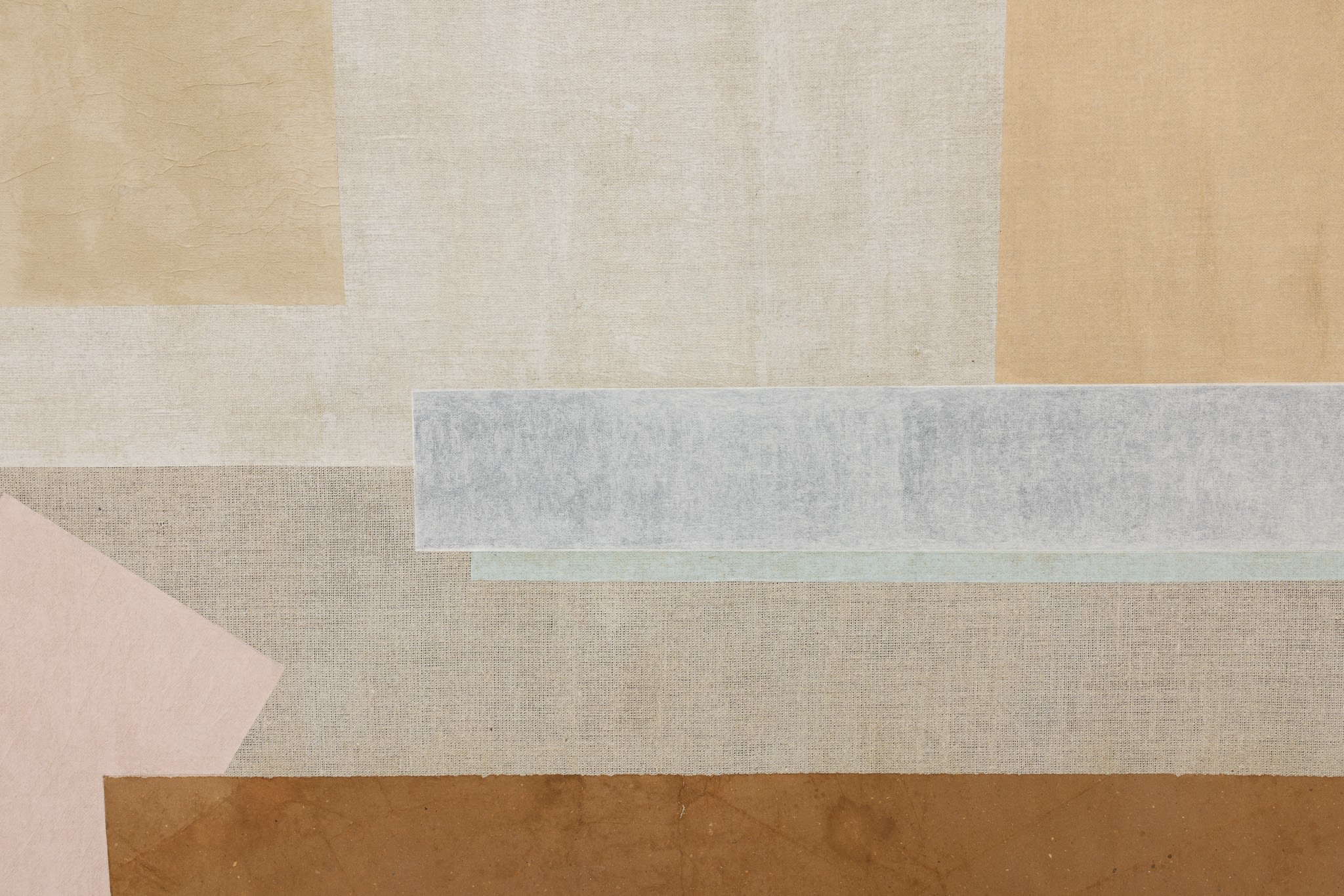
detail image of Barn 1, 2024
My ‘container’ was fueled with a lot of input.
I also took in a lot of the night life in New York, and even wrote my senior thesis about this. I connected the way people go out looking for something to the search of an artist.
These were very influential years.
Paris instead, where I studied Art History, was much more european, settled, classical. Very French education, learning by heart, when in New York instead, we learned how to open the heart and let everything in.
Both are a strong basis in their own way.
On an artistic level the same. In Paris I received the foundation. Starting with the studies of Art History, then learned to draw intensively, oil painting from the very beginning: ow to stretch a canvas, how to prime it, how to apply the oil paint from thin to thick, shadow and light.
In New York we were free to use any medium we wanted.
It is good to master something which you can then let go of.
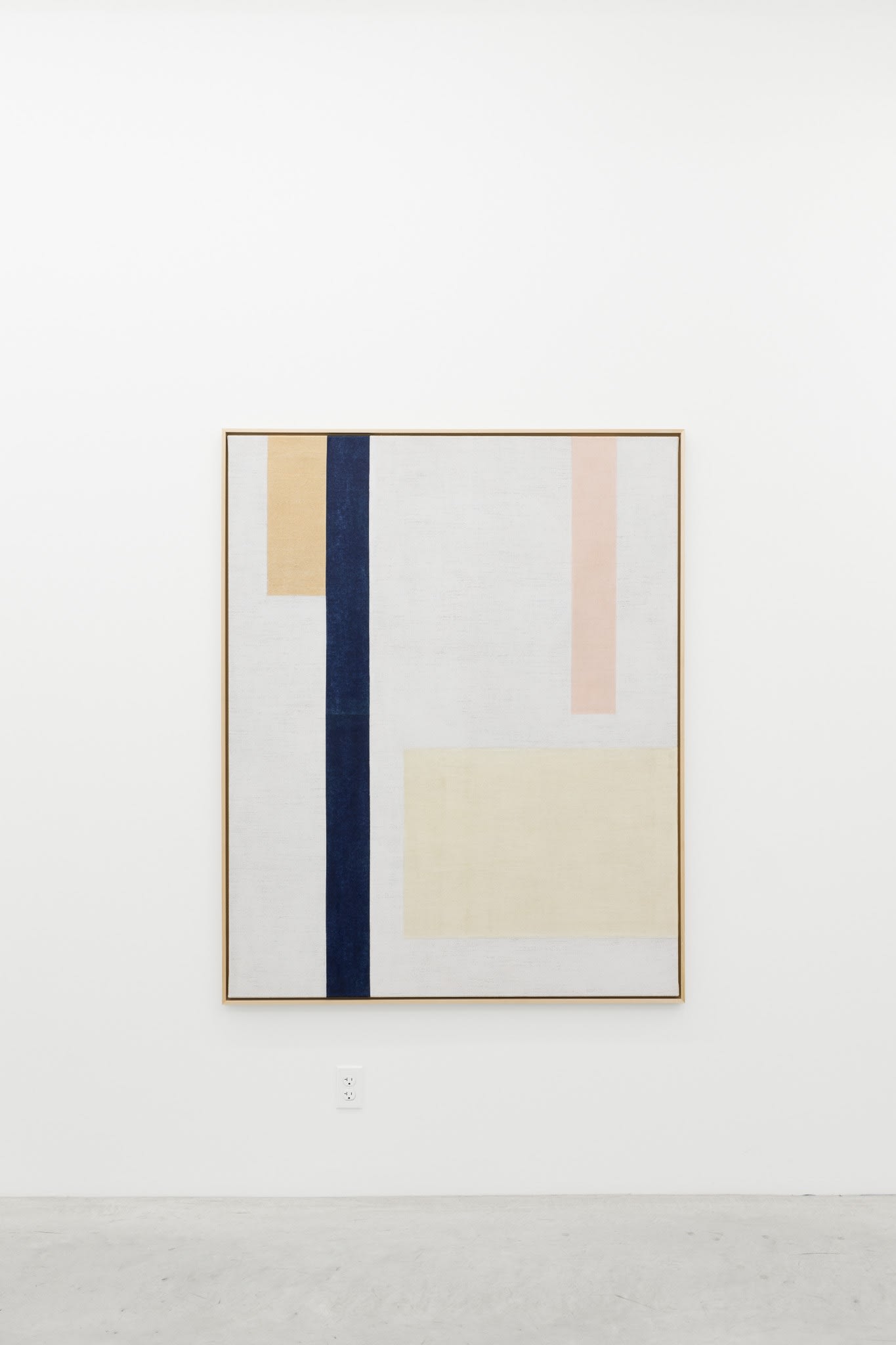
November, 2024
I had made ‚Room I‘ in the Berlin studio, actually looking at images of rooms (a google search) to find structures/spaces which interest me.
I had brought this first piece of the series to the barn, to see if I would use it for the exhibition, but then found some old papers there when cleaning up.
The piece 'Barn I’, which we are showing in New Canaan now, was directly inspired by the shapes and colors of the location, made with those papers found in the barn. After the summer and that exhibition in the barn I went back to my Berlin studio and worked on another series for a show in London.
In 2024 the ‘Rooms’ emerged again, but I was not looking at images from the internet anymore, now they came out of me, out of my memory.
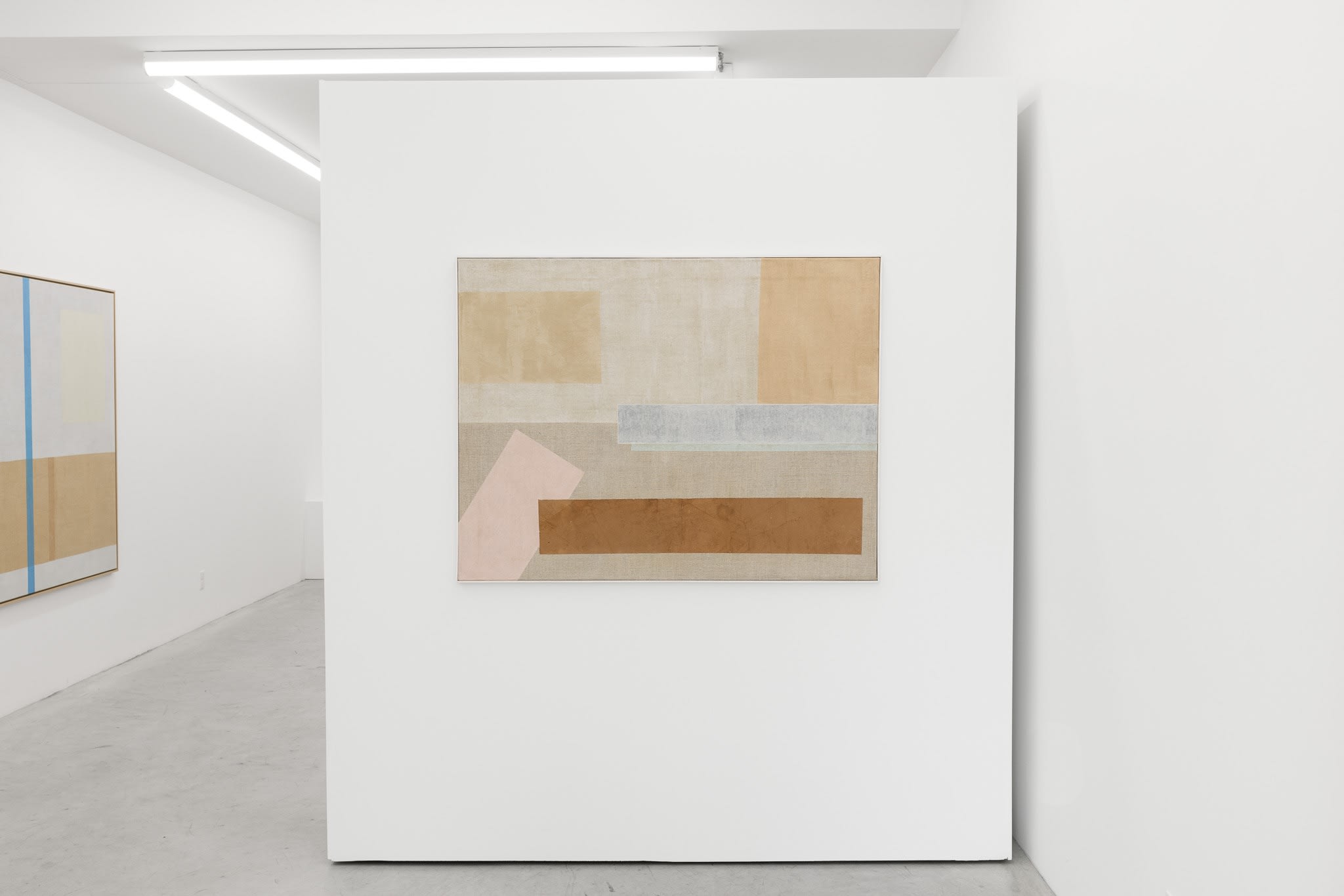
Otherwise I am fond of the November, October, December.
These were kind of tough months on many levels, each of these works has taken me over the course of a month. I love how they have been stripped of anything unnecessary, very little left, but just enough. definitely enough space to breath.
I like seeing them hung as a group, they seem to communicate and inform each other.
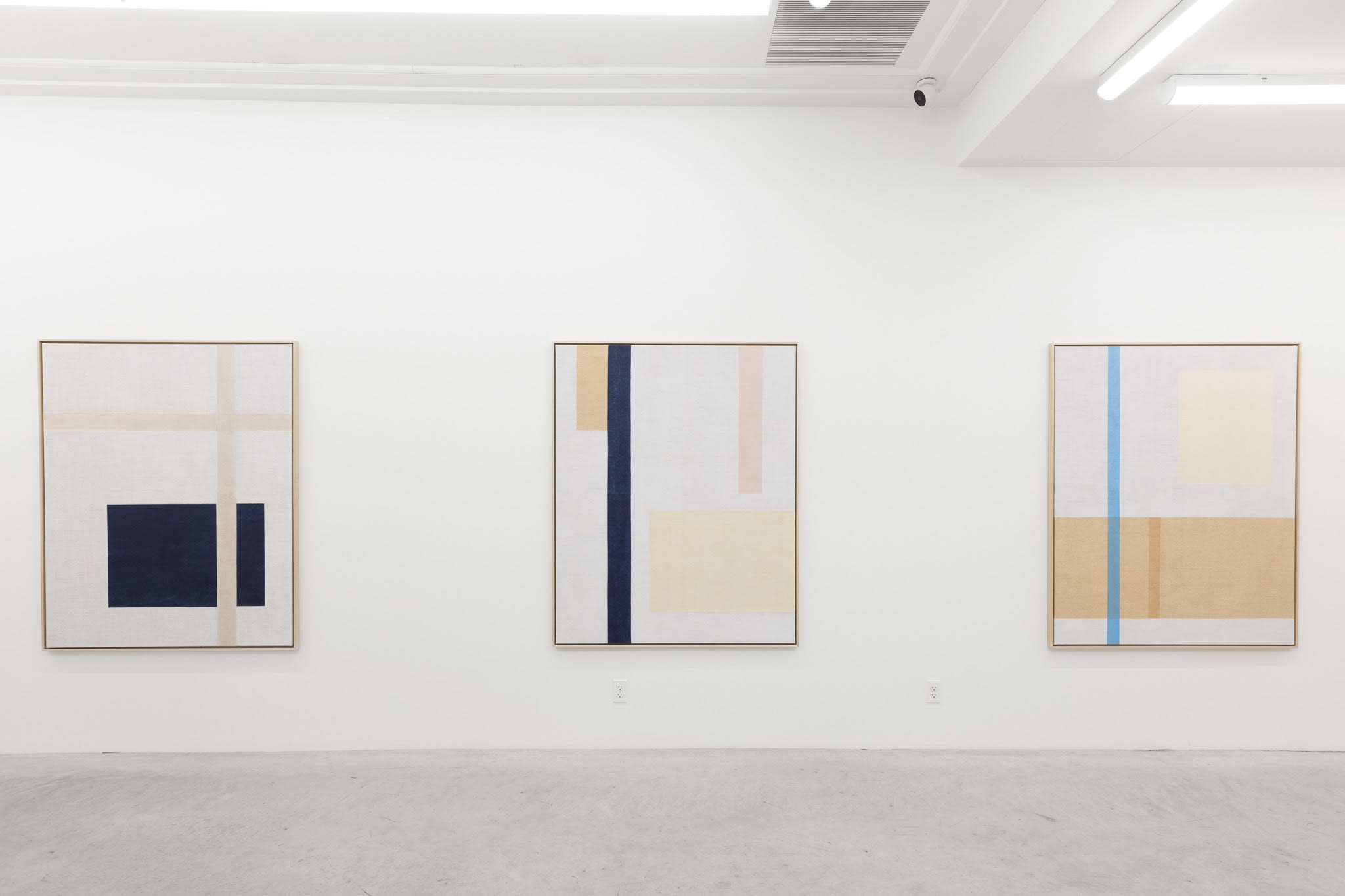
Absolutely! This is exactly what I try to achieve with my work, to visualise that space ‚in between‘ things.
The one for which there are no words.
I love the connection to the architecture of New Canaan and especially the Glass House, such an iconic and perfect building.
The transparency and play with inside and outside is very much reflected in my works, November, December, January and also the two blue very small ones.
One cannot say for sure what is more important, the actual structure, the geometric pieces of paper, or the empty space. They both inform each other other and it is an interplay.
BARTELT: It is both.
The spaces we inhabit interest me. The ones I have inhabited are with me, inside of me.
And then there are the memories of spaces which we carry with us.
Obviously they are flue, becoming vague over time. We don’t remember them exactly, but they are lingering in us, as feeling or an imprint.
"They leave place for new, for the imagination of the viewer, for outside factors, just like the windows/the transparency in the Glass House by Philip Johnson." -BARTELT
A+W: The Glass House is often described as a study in transparency, light, and material interaction. Do you see parallels between its philosophy and the way you construct and deconstruct surfaces in your work?
BARTELT: Yes, definitely in this latest series which we are showing in the gallery now.
I feel they have been stripped bare of anything unnecessary, they were reduced to the minimum.
They leave place for new, for the imagination of the viewer, for outside factors, just like the windows/the transparency in the Glass House by Philip Johnson.
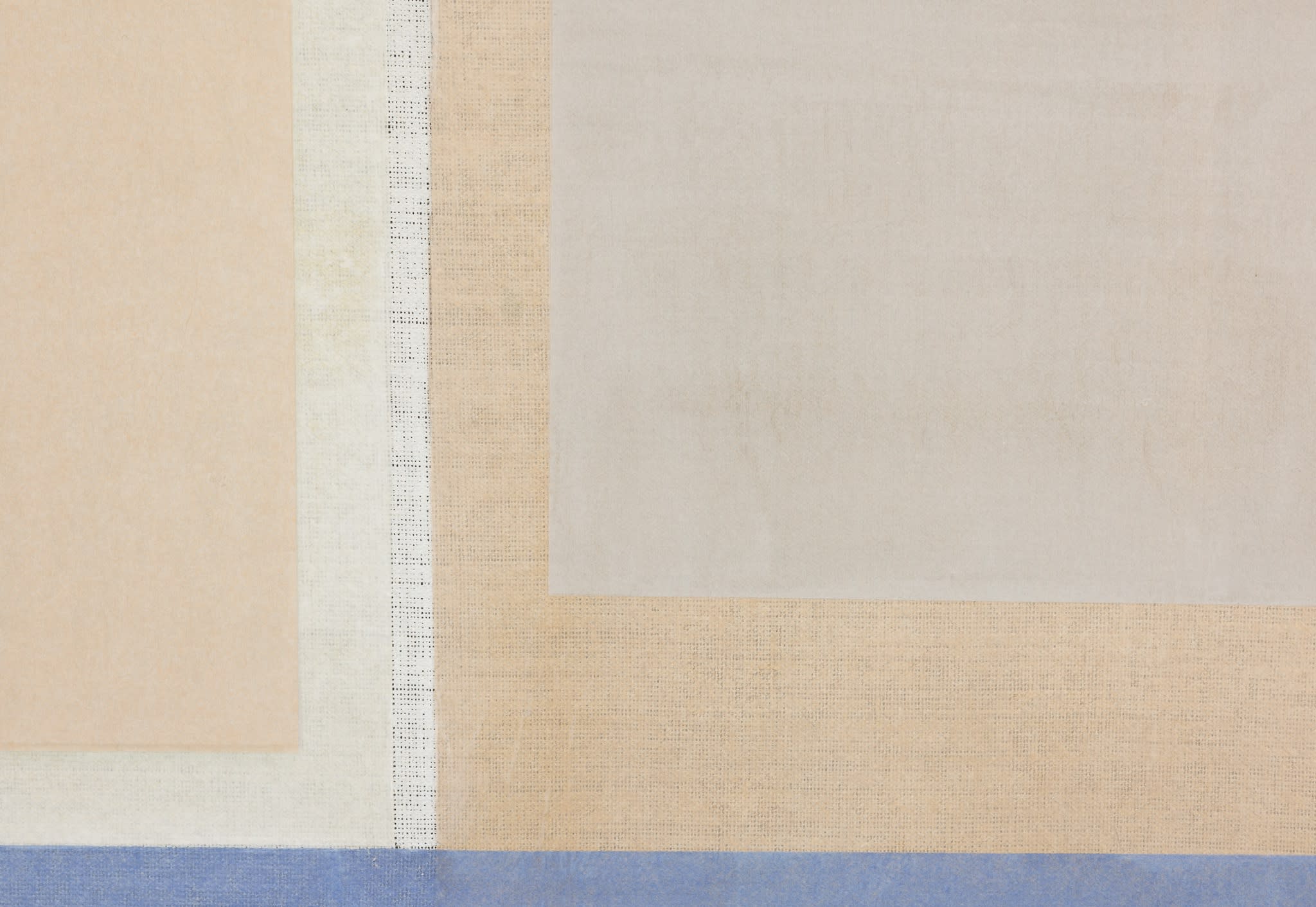
A+W: Looking at Rooms as a whole, do you see this series as a culmination of past ideas, or as a stepping stone toward new directions in your practice?
BARTELT: If they will be a stepping stone towards a new direction will still have to be seen.
My completed series are always a ‘Momentaufnahme’, translated to ‘snapshot’ in English, but snapshot is not the right word. A moment can be larger than a snapshot. A snapshot is a millisecond, but my works are encompassing something much longer than this.
Of course they are always a culmination of past ideas, but worked on in the present moment. And therefore always reflecting some ‚now‘ as well.
For more information on available works by the artist, contact gallery@ardenandwhitegallery.com

